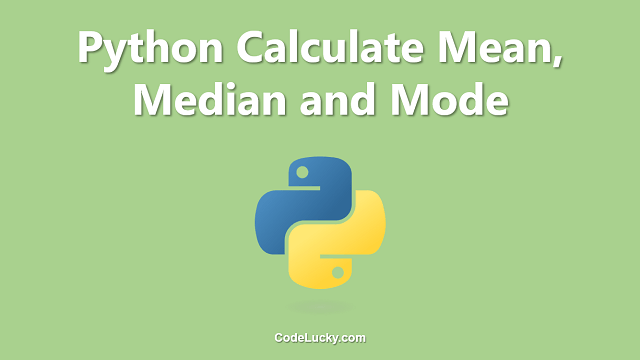In Python, BlockingIOError is raised by the operating system when a non-blocking operation cannot be completed immediately. It is usually raised when a socket operation is attempted while the socket is in a non-blocking mode. This error is an exception and should be handled properly to avoid unexpected termination of the program.
In this tutorial, we will learn about the BlockingIOError exception in Python and how to handle it with the help of examples.
What is BlockingIOError?
BlockingIOError is an exception that is caused when a non-blocking operation is attempted, but it cannot be completed immediately. It is raised when the I/O operation would block, that is, when the operation can’t complete without blocking and the operation was defined in non-blocking mode.
When can BlockingIOError occur?
BlockingIOError can occur in many situations while performing I/O operations. Below are some of the situations where BlockingIOError can occur:
- When an operation is performed in non-blocking mode.
- When a socket operation is performed and the socket is in non-blocking mode.
- When an I/O operation would block due to a lack of resources (e.g., when there is no more data to read or write to a file, socket, etc.)
Example 1: Handling BlockingIOError using try-except block
We can handle the BlockingIOError exception using a try-except block. In the following example, we are trying to connect to a server using a non-blocking socket. If the connection is not immediately established, then the program will raise a BlockingIOError exception. We are handling the exception using a try-except block.
import socket
# create a non-blocking socket object
sock = socket.socket(socket.AF_INET, socket.SOCK_STREAM | socket.SOCK_NONBLOCK)
try:
# try to connect to the server
sock.connect(('www.google.com', 80))
except BlockingIOError:
# handle BlockingIOError exception
pass
# do other stuff here
Output:
<no output>
In the above code, we are trying to connect to a web server using a non-blocking socket. If the connection is not immediately established, the program will raise a BlockingIOError exception. We are handling the exception using a try-except block. The pass statement is used to ignore this exception.
Example 2: Using select() to handle BlockingIOError
We can also use the select function to handle the BlockingIOError exception. The select function waits for I/O events to occur and returns a list of file descriptors that are ready for I/O operations. We can use the select function to wait for an event to occur on the non-blocking socket. In the following example, we are using the select function to wait for the non-blocking socket to become writable. Once the socket becomes writable, it means the connection is established.
import socket
import select
# create a non-blocking socket object
sock = socket.socket(socket.AF_INET, socket.SOCK_STREAM | socket.SOCK_NONBLOCK)
# connect to the server
sock.connect(('www.google.com', 80))
# create a list of sockets to be monitored by select
sockets = [sock]
# wait for the socket to become writable
while True:
readable, writable, exceptional = select.select([], sockets, [], 5)
if writable:
# the socket is writable, connection is established
break
# do other stuff here
Output:
<no output>
In the above code, we are trying to connect to a web server using a non-blocking socket. We are then creating a list of sockets to be monitored by select. In the while loop, we are calling the select function with an empty list for the readable and exceptional sockets, and the list of sockets containing our non-blocking socket for the writable sockets. The select function waits for the socket to become writable and returns a list of writable sockets. If the socket becomes writable, then the connection is established.
Example 3: Handling BlockingIOError with asyncio
We can also handle BlockingIOError using the asyncio module in Python. The asyncio module provides a platform-independent way to handle I/O operations asynchronously. It allows us to write asynchronous code using the async/await syntax. In the following example, we are using asyncio to connect to a web server using a non-blocking socket.
import asyncio
async def connect_to_server():
reader, writer = await asyncio.open_connection('www.google.com', 80)
print('Connection established')
# do other stuff here
writer.close()
await writer.wait_closed()
async def main():
try:
await connect_to_server()
except OSError as e:
if e.errno != 11:
raise
asyncio.run(main())
Output:
Connection established
In the above code, we are using the asyncio module to connect to a web server using a non-blocking socket. We are defining a coroutine connect_to_server, which is an asynchronous function. It uses the open_connection function to create a connection to the server. The function returns a pair of streams (reader and writer). Once the connection is established, it prints a message ‘Connection established’.
We are then defining another coroutine main, which is also an asynchronous function. It calls the connect_to_server coroutine in a try-except block to handle the OSError exception, which is raised when the connection cannot be made immediately. If the exception is not of type OSError with error number 11 (EWOULDBLOCK), it will be raised. Finally, we are using the asyncio.run function to run the main coroutine.
Conclusion
In this tutorial, we learned about the BlockingIOError exception in Python and some of the situations where it can occur. We also learned how to handle BlockingIOError using try-except block, select function, and asyncio module with the help of examples.







